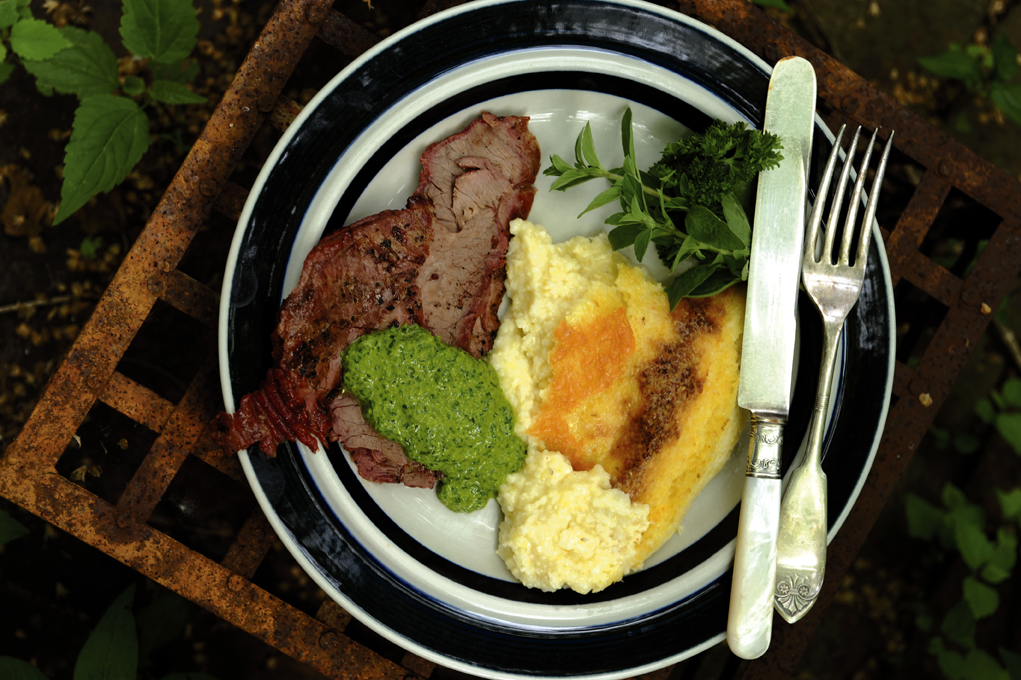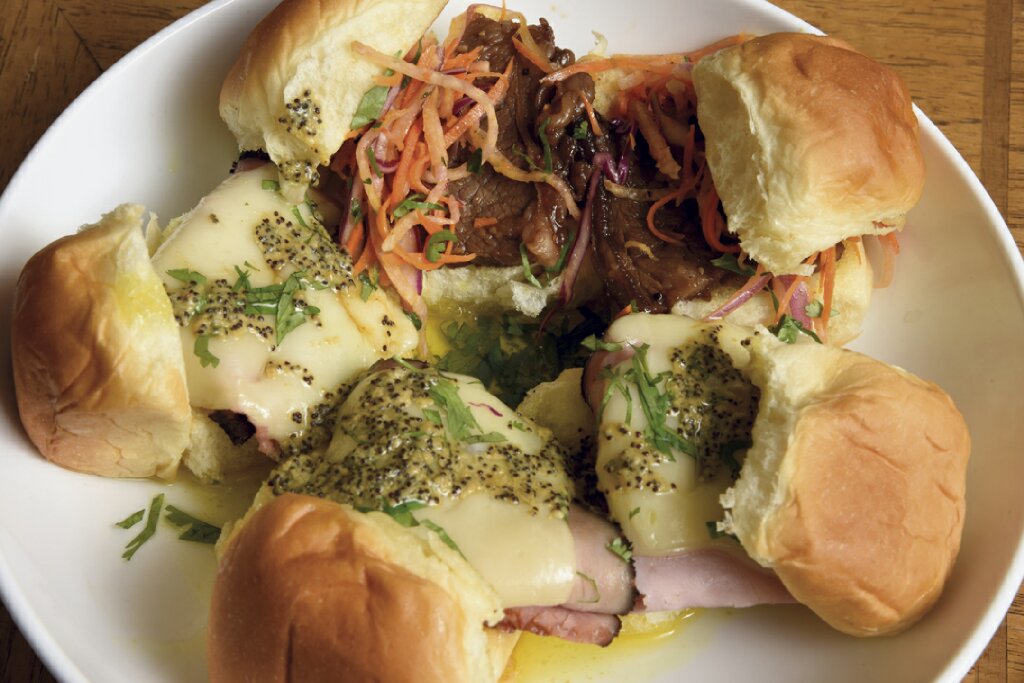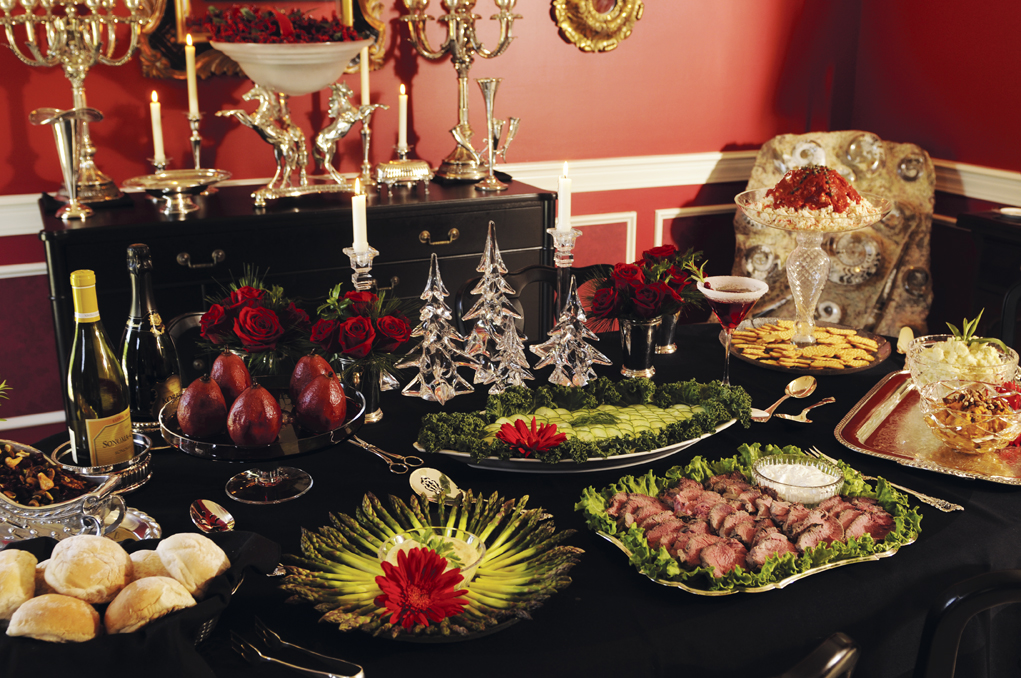There’s not much good about a bad economy.
Many of us are paying now for pleasures we enjoyed months or even years ago, when we had no idea the brakes were on and we went ahead and bought that house, boat or flat-screen TV.
For many of us, eating out has never been about the 30-ounce steak and Joseph Phelps cabernet. And it sure isn’t having a bagged-up hamburger shoved out a window. I can make a hamburger, even on my worst days.
Eating out is about a dog hair-free environment; about being able to request food and have it brought to me. It’s about not having the stress of pleasing all the people all the time. It’s about great china and stemmed crystal. It’s about not doing the dishes. If somebody can do that and make it affordable, I’m in.
Louisville, by nearly everyone’s account, has an inordinate amount of interesting independents eager and able to make you drool. But many of them are outside the bounds of a cavalier decision about whether I feel like cooking tonight. Still, they have tempted me into a Scarlet O’Hara imitation: I’ll worry about money tomorrow.
Not these days. For me and for lots of other people.
There are exceptions. I love the Tea Station Chinese Bistro (9422 Norton Commons Boulevard), where the glassware is delicate, the small wine list is interesting, the food is good and the service is solicitous. If I lived in Norton Commons, I would eat there three times a week. El Mundo, Baxter Station, Mayan Café, Palermo Viejo. . . .In truth, we are a city of lucky diners who have access to lots of interesting, affordable food that isn’t stuck through a window.
Since Lilly’s restaurant chef-owner Kathy Cary adopted the local-food ethos in the mid-90’s, much has been learned about eating seasonally and regionally. And the more we learn, the more important it becomes. From soil-depleting methods of farming used by monoculture techniques, to the loss of nutrients in food picked too early and shipped to far, the number of reasons to eat local continues to grow.
I have made good progress eating locally at home. A few encounters with PBS Frontline specials on food production and I have found my way to predictable sources of beef, lamb, pork and chicken.
And this time of year no one should have trouble cooking seasonal vegetables at home. Nearly everything you could want is available. And there are always shelf-stable foods produced in Kentucky and Indiana.
Flank steak from grass-finished or corn-finished beef (you can find both in the farmers markets in Louisville) is a sure bet for company dinner at my house. And cheese polenta made with Weisenberger grits (www.Weisenberger.com) and Kenny’s Country Cheese (www.kennyscountrycheese.com) are the standard side dish.
I love to serve the steak with chimichurri sauce – a sort of Argentinean pesto that’s too delicious to be believed. By this time of year, anyone who has an herb garden will be glad to part with the parsley and oregano required for this dish. Ditto anyone who has even one hot pepper plant – and garlic for that matter, which grows well in Kentucky and is now in season. Like pesto, chimichurri freezes admirably.
Steak and polenta are the core of the meal, and the choice of vegetables requires one rotation of your garden or farmers market, to see what’s in season, what looks great and what you like most – especially tomatoes — but charred and marinated bell peppers would be good, too. Or grilled eggplant. Or okra.
Eating out or in, now is certainly the season we most happily support our local farmers.
Chimichurri
How much is a bunch of parsley? It’s a whole lot. I’ve never measured the parsley whether I’ve cut it from the clump in the back yard or bought it from someone. But don’t skimp – it’s two cups at the very least.
Use an inexpensive vinegar in this recipe, not the family’s ancient balsamic. And if you grow your own hot peppers, you probably have a freezer full of them. One of those will work as well as the fresh.
1 bunch parsley
1/2 cup (or so) fresh oregano
1 bunch cilantro
6 to 8 peeled garlic cloves
1 shallot, cut in a few pieces
1 fresh hot green chili pepper, such as jalapeno, or to taste
1 teaspoon salt
3 tablespoons vinegar
1/2 cup olive oil
Cut thick stems off the parsley, but don’t worry about skinny ones. Place in a blender container as you prepare it. Add cilantro. Remove oregano leaves from woody stems but tender stems can be added to the mixture.
Add remaining ingredients to the blender and begin blending. The goal: to blend the mixture into a fairly smooth sauce, which requires turning the machine off, stirring and pressing, turning it on, etc. If you’re brave, you can use a wooden spoon to press the mixture of herbs down as the blender runs – for a while you’ll be in little danger of the blades catching the spoon, but you’ll still need to stop the machine and stir occasionally. If you insist on using your food processor for this job, wait to add the olive oil until the leaves have been chopped up a little bit, then add the oil as the machine runs. Makes about 2 cups.
Use about ½ cup to marinate meat or chicken over night. The rest can be passed as a sauce to use liberally to season the grilled meat.
Baked Cheese Grits
6 cups chicken broth or water
2 cups Weisenberger grits
1 teaspoon salt
1/4 teaspoon pepper
12 ounces extra sharp Cheddar cheese, grated (about 3 cups)
1/2 cup milk
4 large eggs, beaten
1/2 cup (1 stick) butter
1 teaspoon Tabasco sauce (or hot pepper sauce of choice)
Preheat the oven to 350 degrees. Grease a 4-quart casserole dish.
Combine broth, grits and salt in a medium saucepan set over high heat. Stirring often, bring the mixture to a boil. Reduce heat to low and simmer until grits have thickened and grits are nearly cooked through, about 15 minutes. Remove from heat. Add pepper, 2 cups cheese and the milk and stir. Add eggs, stirring constantly, then add butter andTabasco and stir until all are combined. Pour the mixture into the prepared casserole dish. Sprinkle with the remaining cheese and bake 60 minutes, until grits are firm. Let it stand 10 minutes for easier serving. Serves 8.
To make garlic cheese grits: Mince a clove or two of garlic. Combine with the butter in a dish, cover loosely and microwave on high to melt butter. Add to grits when called for in the recipe.























